 Facebook
Facebook
 X
X
 Instagram
Instagram
 TikTok
TikTok
 Youtube
Youtube
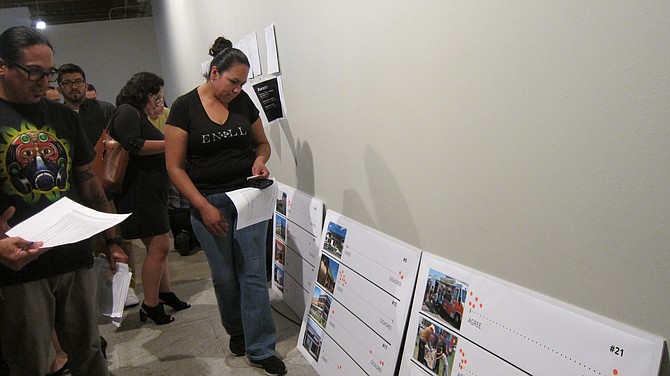
The San Diego City Council approved Barrio Logan's community plan update in 2013. The plan addressed the unhealthy mix of residential and industrial zoning — issues such as industrial businesses opening up next door to schools and residences. Residents wanted a sizable buffer zone between themselves and industry as a safeguard from industrial pollution. The maritime industry wasn’t thrilled about this. A 2014 referendum overturned the city council’s vote. Former mayor Jerry Sanders supported the referendum and so did Kevin Faulconer as he campaigned for mayor. Both Faulconer and the referendum got the votes they needed.
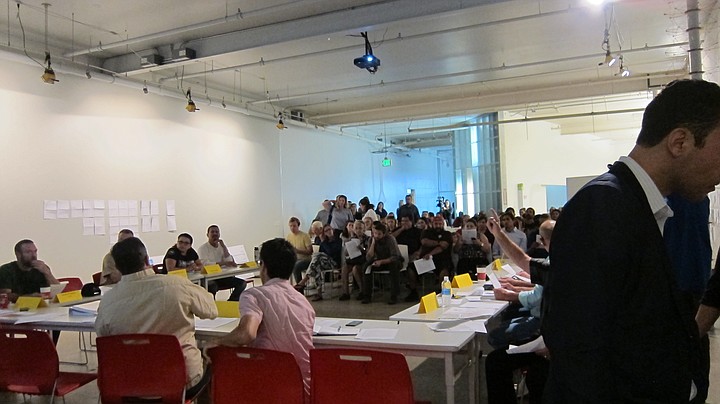
The community has been waiting ever since for the mayor to start the ball rolling again. While they waited, councilmember David Alvarez helped Barrio Logan establish their first community planning group so if and when the mayor initiated an update, the community would have a champion.
Alvarez said after the 2014 referendum that Barrio Logan was left without an updated community plan and that it was imperative the community had a voice in the future decision-making process. "Barrio Logan is a thriving, growing community in the heart of San Diego, and this group is essential to help guide development discussion, in concert with other concerned parties, and advise the council.”
That ball started rolling this week — sort of. The Barrio Logan planning group had a full agenda on September 20. Around 100 people attended, mostly to hear city staff give a much-anticipated update on their community plan.
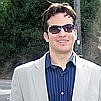
Long-range city planner Brian Schoenfisch talked for about ten minutes but it wasn't exactly the update residents had been waiting so long to hear. Instead, Schoenfisch talked about seeing if a compromise could be reached with the community about the contested part of the community plan update that led to the 2014 referendum. He then asked everyone to put stickers on boards placed around the room. The boards had 32 specific locations, and Schoenfisch asked that they state their approval or disapproval of specific land uses by placing stickers on the boards. Photos ranged from community gardens to shipping facilities.
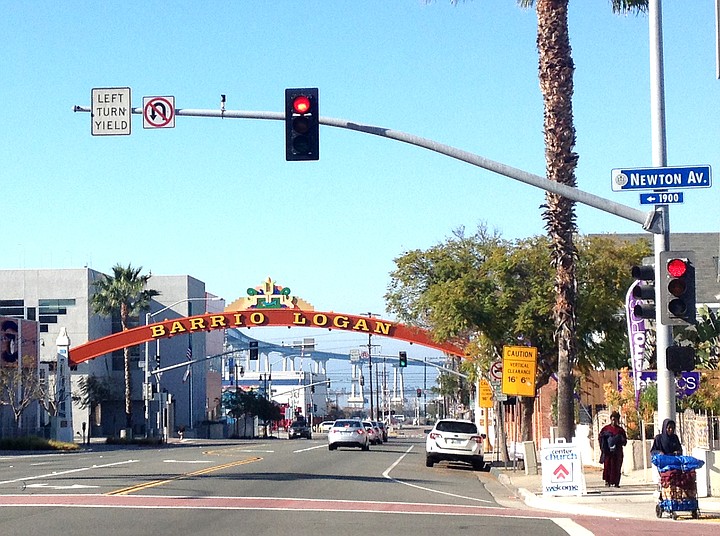
Schoenfisch emphasized that this wasn't about starting the community plan update process over from scratch but instead to work out areas of tension that resulted in the community plan update stalling — that buffer zone. He said there wouldn't be a long discussion because he wanted to listen to the community. He then sent them off to mill about with stickers for about 15 minutes.
As the milling began, someone shouted, "So, do you guys do this with other planning groups?"
I heard another person say, "This is crazy. Why are they asking us to do this again?"
One lady told me she voted yes if a land use didn't cause pollution and no if it did. "We already have too much pollution. We have the freeway, we have the bridge, we have the port, we have everything coming at us, a constant roar that starts at five in the morning. It's not good for our lungs, it's not good for anything."
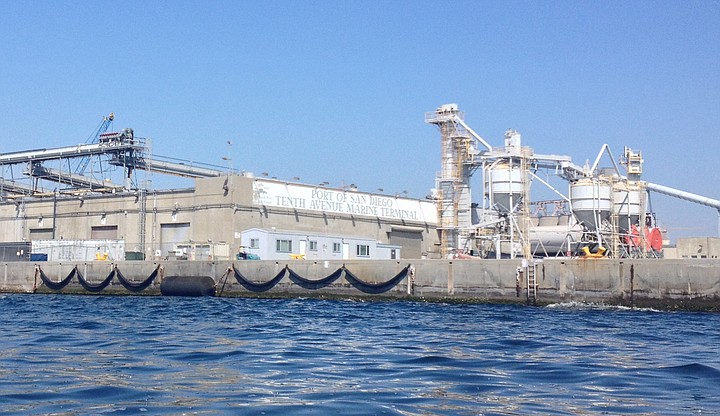
She said that La Jolla doesn't have the same problems Barrio Logan has because they have money. When I asked if she was optimistic about the community plan update finally happening, she said, "Hopefully we get something soon. We want access to the waterfront like Coronado does. Why don't we have the same thing? I don't understand. We get nothing — we don't get asked, we don't get respect, it's the same thing all the time."
Community organizer Jorge Gonzalez from the Environmental Health Coalition was even less pleased. "It was really confusing. Fifteen minutes wasn't enough time. It seemed very intentional the way they framed the workshop. It was really wrong.
"How could you know who lives in Barrio Logan — you just can't give stickers to everyone. People were there that didn't represent Barrio Logan. There were a lot of people there that are interested in buying property in Barrio Logan and that work for industry."
Gonzalez estimated only about 25 percent of the people in attendance were residents, 15 percent business owners, with the rest likely connected to industry.
"A lot of residents refused to do it,” said Gonzalez. “People were pissed, they were confused. We already went through this. We had 50 meetings where we went through this same process prior to the city council approving our plan [in 2013]. That data has been collected already. There is no reason to repeat it…. The boards were confusing. One of the photos was of a taco truck — asking us if we are for or against a taco truck?…
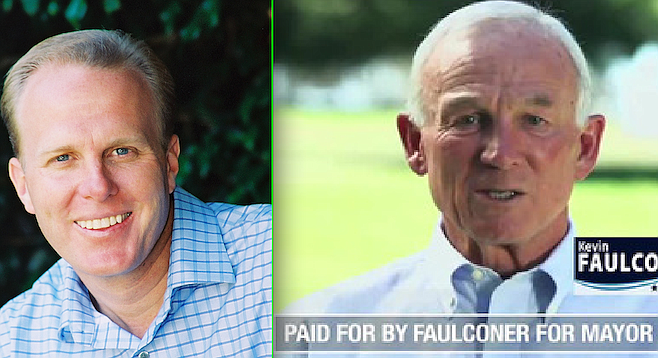
"The planning people were there on behalf of the mayor, on behalf of industry — not on behalf of the community. The community was under the assumption that there would be a discussion about a revised version of the approved city council 2013 community plan update. Instead of a proposal, they brought stickers and boards. Community members aren't kids — we aren't five years old.
"They were there to see if we were willing to give up the transition [buffer] zone the community wants and that the maritime industry doesn't want. Residents want change, industry doesn't."
I asked Gonzalez about the 2014 vote that stalled the update. He said the biggest lie spun was that the Navy would have lost about 40,000 jobs if the community plan was updated. "They got the entire city to vote on our community plan. They confused the issue and they got it passed."
When it comes to the waterfront, Gonzelez didn't mince words. "The community can't enjoy the waterfront. They [industry] might have to give up some to the community instead of profiting from it."
Because of the meeting, Gonzalez said the community wants to protest the city’s planning department. "The ball is in the planning group's court — they need to step up, we need a subcommittee."
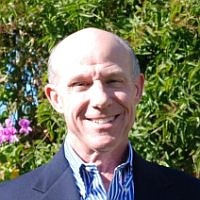
Mark Steele, chair of the planning group, said about the compromise suggested by Schoenfisch, "I think it’s better if we think of it as acting collaboratively to determine land uses in the transition area that work[s] for all. A lot has changed since the referendum. Barrio Logan now has a solid community planning group and during the referendum there was no official voice of the community because Barrio Logan had never had an official community planning group. The administration of Nassco for one has changed and they have been participating in the community planning group on a regular basis. And thirdly, we’re not in the middle of a mayoral election. My belief is that we will be able to develop a plan together for the transition [buffer] zone and review the plan draft in its entirety to solve other concerns we have, such as the truck routes, parking, and community design guidelines."
Steele may see more light at the end of the tunnel than Gonzalez right now, but both seem equally committed to doing right by the community. Steele sees the port working with the community in a more positive way now and significant things are getting accomplished via the planning group.
"In short, we’re working to become a model planning group focusing on a large range of issues from 'good neighbor' improvements in the community to big ideas like the community plan."
UPDATE
After this story was published on September 22, Brian Schoenfisch contacted the author seeking to clarify some points. First, he said he thought he was going to be allotted more time at the planning meeting to have a conversation about the community plan update (he was allotted only about 15 minutes). Secondly, he said the primary purpose of the meeting was to gauge whether there is a willingness to try and reach a compromise. Schoenfisch is still receiving comments. He hopes to have some sort of initial assessment in a few weeks.


The San Diego City Council approved Barrio Logan's community plan update in 2013. The plan addressed the unhealthy mix of residential and industrial zoning — issues such as industrial businesses opening up next door to schools and residences. Residents wanted a sizable buffer zone between themselves and industry as a safeguard from industrial pollution. The maritime industry wasn’t thrilled about this. A 2014 referendum overturned the city council’s vote. Former mayor Jerry Sanders supported the referendum and so did Kevin Faulconer as he campaigned for mayor. Both Faulconer and the referendum got the votes they needed.

The community has been waiting ever since for the mayor to start the ball rolling again. While they waited, councilmember David Alvarez helped Barrio Logan establish their first community planning group so if and when the mayor initiated an update, the community would have a champion.
Alvarez said after the 2014 referendum that Barrio Logan was left without an updated community plan and that it was imperative the community had a voice in the future decision-making process. "Barrio Logan is a thriving, growing community in the heart of San Diego, and this group is essential to help guide development discussion, in concert with other concerned parties, and advise the council.”
That ball started rolling this week — sort of. The Barrio Logan planning group had a full agenda on September 20. Around 100 people attended, mostly to hear city staff give a much-anticipated update on their community plan.

Long-range city planner Brian Schoenfisch talked for about ten minutes but it wasn't exactly the update residents had been waiting so long to hear. Instead, Schoenfisch talked about seeing if a compromise could be reached with the community about the contested part of the community plan update that led to the 2014 referendum. He then asked everyone to put stickers on boards placed around the room. The boards had 32 specific locations, and Schoenfisch asked that they state their approval or disapproval of specific land uses by placing stickers on the boards. Photos ranged from community gardens to shipping facilities.

Schoenfisch emphasized that this wasn't about starting the community plan update process over from scratch but instead to work out areas of tension that resulted in the community plan update stalling — that buffer zone. He said there wouldn't be a long discussion because he wanted to listen to the community. He then sent them off to mill about with stickers for about 15 minutes.
As the milling began, someone shouted, "So, do you guys do this with other planning groups?"
I heard another person say, "This is crazy. Why are they asking us to do this again?"
One lady told me she voted yes if a land use didn't cause pollution and no if it did. "We already have too much pollution. We have the freeway, we have the bridge, we have the port, we have everything coming at us, a constant roar that starts at five in the morning. It's not good for our lungs, it's not good for anything."

She said that La Jolla doesn't have the same problems Barrio Logan has because they have money. When I asked if she was optimistic about the community plan update finally happening, she said, "Hopefully we get something soon. We want access to the waterfront like Coronado does. Why don't we have the same thing? I don't understand. We get nothing — we don't get asked, we don't get respect, it's the same thing all the time."
Community organizer Jorge Gonzalez from the Environmental Health Coalition was even less pleased. "It was really confusing. Fifteen minutes wasn't enough time. It seemed very intentional the way they framed the workshop. It was really wrong.
"How could you know who lives in Barrio Logan — you just can't give stickers to everyone. People were there that didn't represent Barrio Logan. There were a lot of people there that are interested in buying property in Barrio Logan and that work for industry."
Gonzalez estimated only about 25 percent of the people in attendance were residents, 15 percent business owners, with the rest likely connected to industry.
"A lot of residents refused to do it,” said Gonzalez. “People were pissed, they were confused. We already went through this. We had 50 meetings where we went through this same process prior to the city council approving our plan [in 2013]. That data has been collected already. There is no reason to repeat it…. The boards were confusing. One of the photos was of a taco truck — asking us if we are for or against a taco truck?…

"The planning people were there on behalf of the mayor, on behalf of industry — not on behalf of the community. The community was under the assumption that there would be a discussion about a revised version of the approved city council 2013 community plan update. Instead of a proposal, they brought stickers and boards. Community members aren't kids — we aren't five years old.
"They were there to see if we were willing to give up the transition [buffer] zone the community wants and that the maritime industry doesn't want. Residents want change, industry doesn't."
I asked Gonzalez about the 2014 vote that stalled the update. He said the biggest lie spun was that the Navy would have lost about 40,000 jobs if the community plan was updated. "They got the entire city to vote on our community plan. They confused the issue and they got it passed."
When it comes to the waterfront, Gonzelez didn't mince words. "The community can't enjoy the waterfront. They [industry] might have to give up some to the community instead of profiting from it."
Because of the meeting, Gonzalez said the community wants to protest the city’s planning department. "The ball is in the planning group's court — they need to step up, we need a subcommittee."

Mark Steele, chair of the planning group, said about the compromise suggested by Schoenfisch, "I think it’s better if we think of it as acting collaboratively to determine land uses in the transition area that work[s] for all. A lot has changed since the referendum. Barrio Logan now has a solid community planning group and during the referendum there was no official voice of the community because Barrio Logan had never had an official community planning group. The administration of Nassco for one has changed and they have been participating in the community planning group on a regular basis. And thirdly, we’re not in the middle of a mayoral election. My belief is that we will be able to develop a plan together for the transition [buffer] zone and review the plan draft in its entirety to solve other concerns we have, such as the truck routes, parking, and community design guidelines."
Steele may see more light at the end of the tunnel than Gonzalez right now, but both seem equally committed to doing right by the community. Steele sees the port working with the community in a more positive way now and significant things are getting accomplished via the planning group.
"In short, we’re working to become a model planning group focusing on a large range of issues from 'good neighbor' improvements in the community to big ideas like the community plan."
UPDATE
After this story was published on September 22, Brian Schoenfisch contacted the author seeking to clarify some points. First, he said he thought he was going to be allotted more time at the planning meeting to have a conversation about the community plan update (he was allotted only about 15 minutes). Secondly, he said the primary purpose of the meeting was to gauge whether there is a willingness to try and reach a compromise. Schoenfisch is still receiving comments. He hopes to have some sort of initial assessment in a few weeks.
Comments